Grow Angled Luffa at Home and unlock a world of natural sponges right in your backyard! Have you ever imagined ditching those synthetic scrubbers and creating your own eco-friendly, exfoliating wonders? This isn’t just about gardening; it’s about embracing a sustainable lifestyle and connecting with nature in a truly unique way.
The Luffa, also known as the sponge gourd, has a rich history, deeply rooted in Asian and African cultures where it has been cultivated for centuries not only for its fibrous interior but also as a food source when young. Imagine, generations past relying on this incredible plant for everything from bathing to cleaning!
In today’s world, where we’re all striving to reduce our environmental footprint, learning how to grow angled luffa at home is more relevant than ever. Think about it: no more plastic loofahs ending up in landfills! Plus, the satisfaction of nurturing a plant from seed to sponge is incredibly rewarding. I’m excited to share some simple, effective DIY tricks and hacks that will help you successfully cultivate these amazing gourds, even if you’re a beginner gardener. Let’s get our hands dirty and create something truly special!
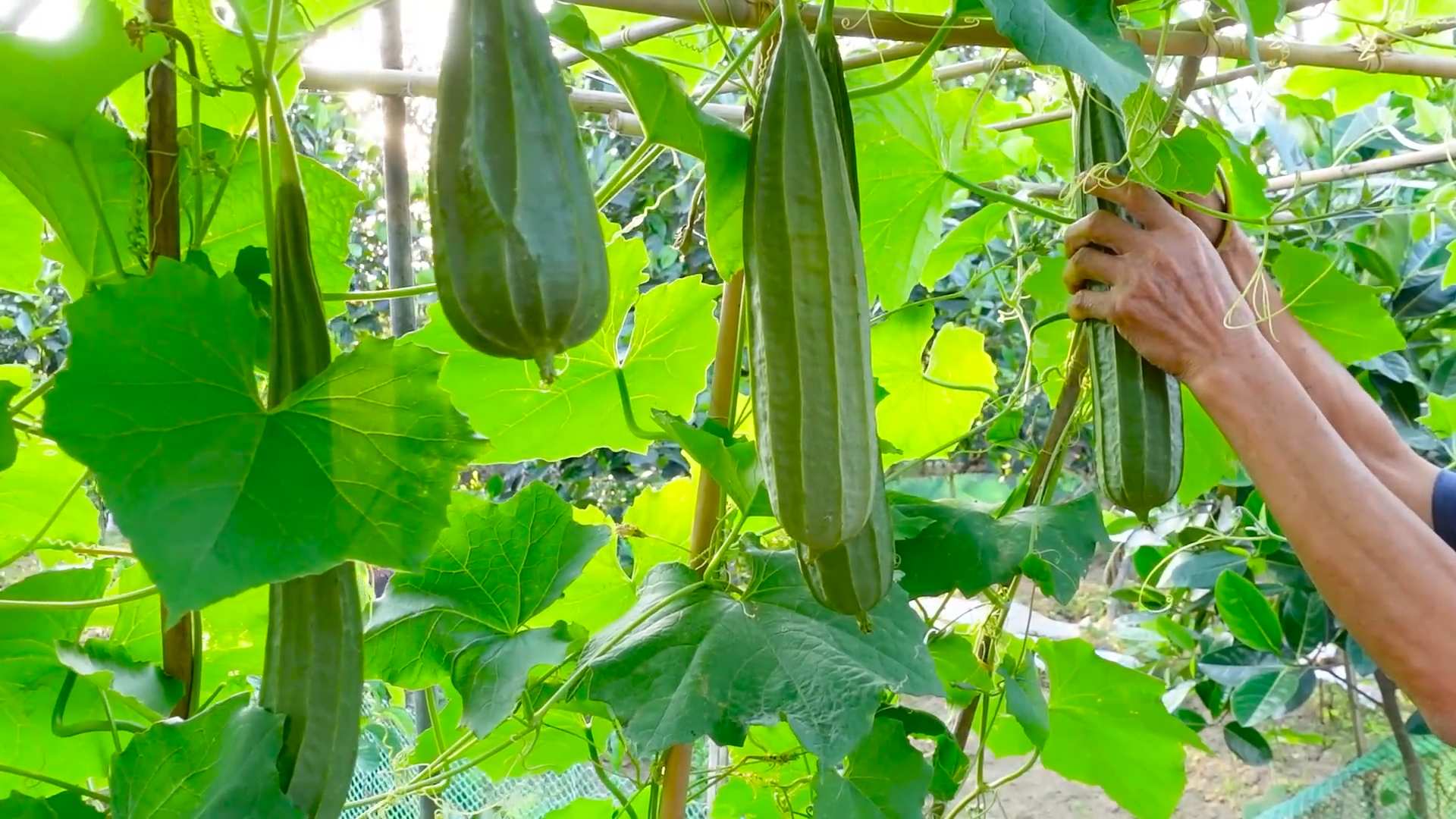
Grow Your Own Angled Luffa Sponges: A Complete DIY Guide
Hey there, fellow gardening enthusiasts! Ever thought about growing your own sponges? I know, it sounds a little crazy, but it’s totally doable and incredibly rewarding. I’m talking about angled luffa, also known as Chinese okra or silk gourd. These amazing gourds not only produce delicious vegetables when young but also transform into fantastic, all-natural sponges when mature. I’m going to walk you through everything you need to know to successfully grow angled luffa at home, from seed to sponge!
Choosing the Right Variety and Starting Seeds
First things first, let’s talk about variety. While there are different types of luffa, angled luffa ( *Luffa acutangula* ) is the one we’re after for both eating and sponge-making. Make sure you specifically look for seeds labeled “angled luffa” or “Chinese okra.”
Here’s how I like to get my luffa journey started:
* Sourcing Seeds: You can find angled luffa seeds online or at some specialty garden centers. Look for reputable suppliers to ensure good germination rates.
* Timing is Key: Luffa needs a long growing season (around 150-200 days), so starting seeds indoors is crucial, especially if you live in a cooler climate. I usually start mine about 6-8 weeks before the last expected frost.
* Seed Scarification (Optional but Recommended): Luffa seeds have a tough outer shell. To improve germination, you can gently scarify them. This involves lightly scratching the seed coat with sandpaper or nicking it with a knife. Be careful not to damage the inner seed!
* Soaking the Seeds: After scarification (or even if you skip it), soak the seeds in warm water for 24-48 hours. This helps soften the seed coat and encourages germination.
Now, let’s get those seeds planted!
1. Prepare Your Seed Starting Mix: Use a well-draining seed starting mix. I like to use a mix of peat moss, perlite, and vermiculite.
2. Planting the Seeds: Fill small pots (about 3-4 inches in diameter) with the seed starting mix. Make a small hole about 1 inch deep and place one or two seeds in each pot. Cover the seeds with soil and gently water.
3. Creating a Warm and Humid Environment: Luffa seeds need warmth and humidity to germinate. You can use a heat mat under the seed trays and cover them with a plastic dome or plastic wrap to create a mini-greenhouse effect.
4. Maintaining Moisture: Keep the soil consistently moist but not waterlogged. Check the soil daily and water as needed.
5. Providing Light: Once the seedlings emerge (usually within 1-2 weeks), remove the plastic cover and provide them with plenty of light. A sunny windowsill or grow lights will work well.
6. Thinning Seedlings: If you planted two seeds per pot and both germinate, thin them out by snipping off the weaker seedling at the soil line.
Preparing the Garden and Transplanting Seedlings
While your luffa seedlings are growing indoors, it’s time to get your garden ready. Luffa vines are vigorous growers and need plenty of space and support.
* Choosing the Right Location: Select a sunny spot in your garden that receives at least 6-8 hours of direct sunlight per day.
* Soil Preparation: Luffa prefers well-drained, fertile soil. Amend your soil with compost or well-rotted manure to improve its fertility and drainage.
* Building a Strong Trellis: This is crucial! Luffa vines can grow 15-30 feet long and become quite heavy. You’ll need a sturdy trellis, fence, or arbor to support them. I’ve used everything from cattle panels to homemade wooden structures. Make sure it’s strong enough to handle the weight of the vines and gourds.
Once the danger of frost has passed and the soil has warmed up, it’s time to transplant your luffa seedlings into the garden.
1. Harden Off the Seedlings: Before transplanting, gradually acclimate your seedlings to outdoor conditions. This process, called hardening off, involves exposing them to increasing amounts of sunlight and wind over a period of 1-2 weeks. Start by placing them outdoors for a few hours each day and gradually increase the time.
2. Transplanting: Dig holes that are slightly larger than the root balls of your seedlings. Gently remove the seedlings from their pots and place them in the holes. Backfill with soil and water thoroughly.
3. Spacing: Space the seedlings about 2-3 feet apart along the trellis.
4. Mulching: Apply a layer of mulch around the base of the plants to help retain moisture, suppress weeds, and regulate soil temperature.
Caring for Your Luffa Vines
Now that your luffa vines are in the ground, it’s time to provide them with the care they need to thrive.
* Watering: Luffa vines need consistent moisture, especially during hot, dry weather. Water deeply and regularly, especially when the gourds are developing.
* Fertilizing: Feed your luffa vines with a balanced fertilizer every few weeks. You can also side-dress them with compost or well-rotted manure.
* Pruning: Pruning can help improve air circulation and encourage fruit production. Remove any yellowing or dead leaves. You can also prune back the vines if they become too unruly.
* Pollination: Luffa flowers are pollinated by insects, primarily bees. If you’re not seeing many bees in your garden, you may need to hand-pollinate the flowers. To do this, use a small paintbrush to transfer pollen from the male flowers (which have a long, thin stem) to the female flowers (which have a small gourd-like structure at the base).
* Pest and Disease Control: Luffa vines are generally pest-resistant, but they can be susceptible to certain pests and diseases, such as squash bugs, aphids, and powdery mildew. Monitor your plants regularly and take action if you notice any problems. Insecticidal soap or neem oil can be used to control pests, and a fungicide can be used to treat powdery mildew.
Harvesting and Processing Luffa Gourds
This is where the magic happens! You’ll harvest luffa at two different stages, depending on whether you want to eat them or use them as sponges.
Harvesting for Eating
Young luffa gourds are delicious and can be used in a variety of dishes, similar to zucchini or summer squash.
* Timing: Harvest the gourds when they are young and tender, usually when they are about 6-8 inches long. The skin should be smooth and easily pierced with your fingernail.
* Harvesting: Use a sharp knife or pruners to cut the gourds from the vine.
Harvesting for Sponges
To harvest luffa for sponges, you’ll need to wait until the gourds are fully mature and the skin has turned brown and hard.
* Timing: Allow the gourds to mature on the vine until the skin is dry, brown, and brittle. You should be able to hear the seeds rattling inside when you shake them. This usually happens in the late fall or early winter.
* Harvesting: Cut the gourds from the vine, leaving a few inches of stem attached.
Now comes the fun part: turning those gourds into sponges!
1. Soaking the Gourds: Soak the harvested gourds in water for several days to soften the skin. This will make it easier to remove. I use a large tub or bucket for this.
2. Removing the Skin: Once the skin is softened, you should be able to peel it off easily. You may need to use a knife or scraper to help remove stubborn pieces.
3. Removing the Seeds: After removing the skin, shake out the seeds. You can save these seeds for planting next year!
4. Rinsing and Cleaning: Rinse the luffa sponge thoroughly with water to remove any remaining pulp or debris.
5. Bleaching (Optional): If you want a whiter sponge, you can soak it in a diluted bleach solution for a few minutes. Be sure to rinse it thoroughly afterwards.
6. Drying: Allow the luffa sponge to dry completely in the sun or in a well-ventilated area. This will help prevent mold and mildew.
7. Cutting and Shaping: Once the sponge is dry, you can cut it into smaller pieces or shape it as desired. I like to cut mine into smaller pieces for use in the shower or kitchen.
Using and Caring for Your Homemade Luffa Sponges
Congratulations! You’ve successfully grown and processed your own angled luffa sponges. Now it’s time to put
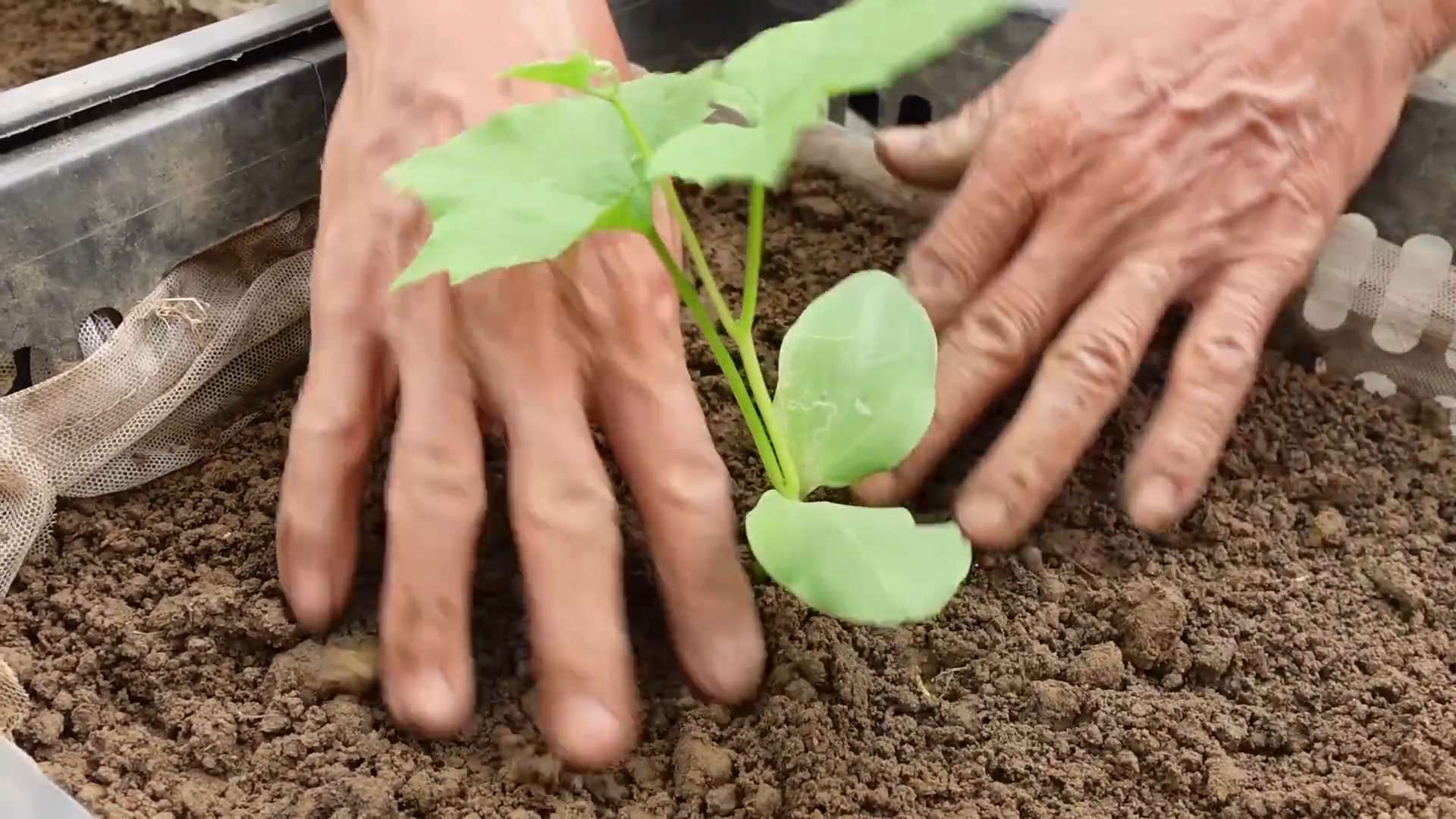
Conclusion
So, there you have it! Growing your own angled luffa at home is not just a gardening project; it’s an investment in sustainable living, a step towards reducing your reliance on commercially produced sponges, and a rewarding experience that connects you directly to the natural world. Forget those mass-produced, often chemically treated sponges from the store. Imagine the satisfaction of exfoliating with a luffa you nurtured from seed to shower!
This DIY trick is a must-try for several compelling reasons. First, you gain complete control over the growing process, ensuring your luffa is free from harmful pesticides and herbicides. Second, you’re contributing to a more eco-friendly lifestyle by reducing plastic waste and supporting sustainable practices. Third, and perhaps most importantly, you’re embarking on a fascinating journey of discovery, learning about plant life cycles and the magic of turning a seed into a useful household item.
But the fun doesn’t stop there! Feel free to experiment with different varieties of luffa seeds. Some produce larger, coarser sponges, while others yield finer, more delicate textures. You can also try companion planting to enhance growth and deter pests. Marigolds, for example, are known to repel nematodes and other unwanted visitors. Consider adding a trellis system to maximize space and encourage vertical growth.
And if you’re feeling adventurous, why not try incorporating your homegrown angled luffa into other DIY projects? You can use it to create natural bath scrubs, exfoliating soaps, or even decorative items for your home. The possibilities are truly endless!
We wholeheartedly encourage you to give this DIY trick a try. It’s a relatively simple and inexpensive project that yields incredible results. Not only will you have a sustainable and natural sponge at your fingertips, but you’ll also gain a deeper appreciation for the wonders of nature.
Don’t be afraid to get your hands dirty and embrace the learning process. Remember to document your progress, take photos, and share your experiences with us! We’d love to hear about your successes, challenges, and any unique variations you discover along the way. Let’s build a community of luffa growers and inspire others to embrace a more sustainable and self-sufficient lifestyle. So, grab some seeds, prepare your garden, and get ready to experience the joy of growing your own angled luffa!
Frequently Asked Questions (FAQs)
What is the best time of year to plant angled luffa seeds?
Angled luffa requires a long growing season, typically 150-200 days. Therefore, it’s best to start your seeds indoors 6-8 weeks before the last expected frost. This will give your seedlings a head start and ensure they have enough time to mature and produce luffas before the end of the growing season. If you live in a warmer climate with a longer growing season, you can direct sow the seeds after the last frost, once the soil has warmed up to at least 70°F (21°C).
How much space does an angled luffa plant need?
Angled luffa vines are vigorous growers and require ample space to thrive. Each plant needs at least 3-4 feet of space in all directions. It’s also crucial to provide a sturdy trellis or support system for the vines to climb on. A strong trellis will prevent the heavy luffas from weighing down the plant and potentially breaking the vines. Consider using a cattle panel, a chain-link fence, or a custom-built trellis made from wood or metal.
What type of soil is best for growing angled luffa?
Angled luffa prefers well-drained, fertile soil that is rich in organic matter. Before planting, amend your soil with compost, aged manure, or other organic amendments to improve drainage and nutrient content. A slightly acidic to neutral soil pH (6.0-7.0) is ideal. You can test your soil pH using a soil testing kit available at most garden centers. If your soil is too acidic, you can add lime to raise the pH. If it’s too alkaline, you can add sulfur to lower the pH.
How often should I water my angled luffa plants?
Angled luffa plants need consistent moisture, especially during hot and dry weather. Water deeply and regularly, aiming to keep the soil consistently moist but not waterlogged. Avoid overhead watering, as this can increase the risk of fungal diseases. Instead, water at the base of the plant using a soaker hose or drip irrigation system. Mulching around the plants with straw or wood chips can help retain moisture and suppress weeds.
How do I know when my angled luffa is ready to harvest?
The best time to harvest your angled luffa is when the skin turns yellow or brown and feels lightweight. The luffa should also feel dry and hollow inside. If you wait too long, the luffa will become too fibrous and difficult to process. To harvest, simply cut the luffa from the vine using a sharp knife or pruning shears. Leave a few inches of stem attached to the luffa.
How do I process my harvested angled luffa?
Processing your angled luffa involves removing the skin, seeds, and pulp to reveal the sponge. First, soak the luffa in water for a few days to soften the skin. Then, use your hands or a scrub brush to peel off the skin. Once the skin is removed, shake out the seeds and rinse the luffa thoroughly. You can then soak the luffa in a diluted bleach solution (1 part bleach to 9 parts water) for about 30 minutes to disinfect it. Finally, rinse the luffa again and allow it to dry completely in the sun.
Can I eat angled luffa?
Yes, you can eat young angled luffa fruits. They are often used in Asian cuisine and have a mild, slightly sweet flavor. The young fruits should be harvested when they are still green and tender, typically when they are less than 6 inches long. You can stir-fry, steam, or add them to soups and stews. However, once the luffa matures and becomes fibrous, it is no longer edible.
What are some common pests and diseases that affect angled luffa plants?
Angled luffa plants can be susceptible to various pests and diseases, including squash bugs, squash vine borers, aphids, powdery mildew, and fungal diseases. To prevent pest and disease problems, practice good garden hygiene, such as removing plant debris and weeds regularly. You can also use organic pest control methods, such as insecticidal soap, neem oil, or diatomaceous earth. For fungal diseases, ensure good air circulation and avoid overhead watering. If necessary, you can use a fungicide specifically labeled for use on cucurbits.
How can I save seeds from my angled luffa for next year?
Saving seeds from your angled luffa is a great way to ensure you have a supply of seeds for future plantings. To save seeds, allow a few luffas to fully mature on the vine until they are completely dry and brown. Then, harvest the luffas and remove the seeds. Spread the seeds out on a paper towel to dry completely. Once the seeds are dry, store them in an airtight container in a cool, dark, and dry place. Properly stored seeds can remain viable for several years.
Is growing angled luffa at home worth the effort?
Absolutely! Growing your own angled luffa is a rewarding and sustainable way to produce your own natural sponges. Not only will you have a readily available supply of eco-friendly cleaning tools, but you’ll also gain a deeper appreciation for the natural world and the satisfaction of growing your own food and household items. Plus, it’s a fun and educational project for the whole family!


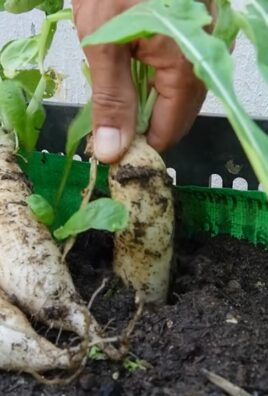
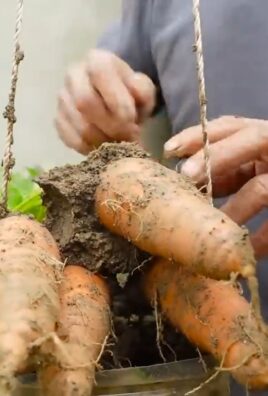
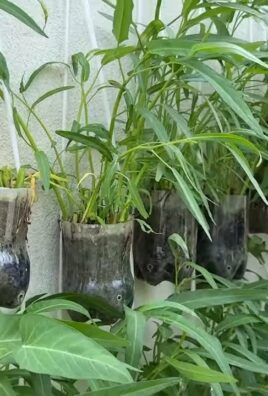
Leave a Comment